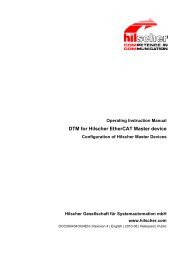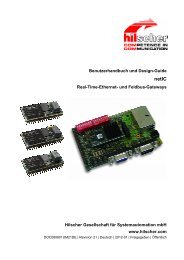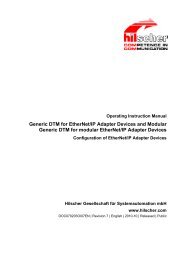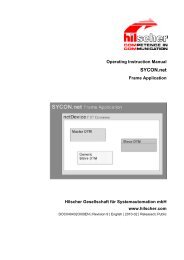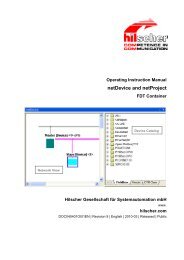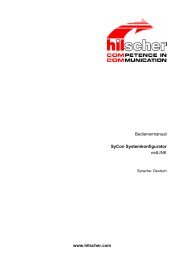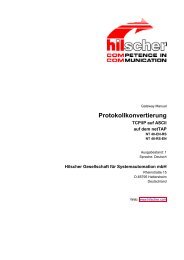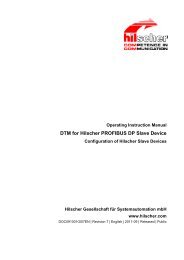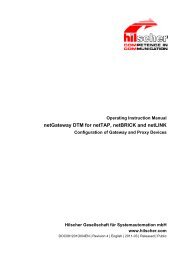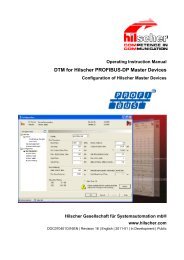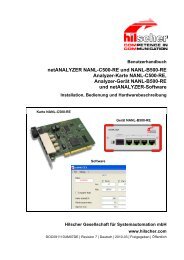DeviceNet Master Protocol API
DeviceNet Master Protocol API
DeviceNet Master Protocol API
You also want an ePaper? Increase the reach of your titles
YUMPU automatically turns print PDFs into web optimized ePapers that Google loves.
<strong>DeviceNet</strong>-<strong>Master</strong> Dual-Port Memory • 27<br />
3 Dual-Port Memory<br />
All data in the dual-port memory is structured in blocks. According to their functions, these blocks use<br />
different data transfer mechanisms. For example, data transfer through mailboxes uses a<br />
synchronized handshake mechanism between host system and netX firmware. The same is true for IO<br />
data images, when a buffered handshake mode is configured. Other blocks, like the status block, are<br />
read by the host application and use no synchronization mechanism.<br />
Types of blocks in the dual-port memory are outlined below:<br />
• Mailbox<br />
transfer non-cyclic messages or packages with a header for routing information<br />
• Data Area<br />
holds the process image for cyclic I/O data or user defined data structures<br />
• Control Block<br />
is used to signal application related state to the netX firmware<br />
• Status Block<br />
holds information regarding the current network state<br />
• Change of State<br />
collection of flags that initiate execution of certain commands or signal a change of state<br />
3.1 Cyclic Data (Input/Output Data)<br />
The input block holds the process data image received from the network whereas the output block<br />
holds data sent to the network<br />
For the controlled / buffered mode, the protocol stack updates the process data in the internal input<br />
buffer for each valid bus cycle. Each IO block uses handshake bits for access synchronization. Input<br />
and output data block handshake operates independently from each other. When the application<br />
toggles the input handshake bit, the protocol stack copies the data from the internal buffer into the<br />
input data image of the dual-port memory. Now the application can copy data from the dual-port<br />
memory and then give control back to the protocol stack by toggling the appropriate input handshake<br />
bit. When the application / driver toggles the output handshake bit, the protocol stack copies the data<br />
from the output data image of the dual-port memory into the internal buffer. From there the data is<br />
transferred to the network. The protocol stack toggles the handshake bits back, indicating to the<br />
application that the transfer is finished and a new data exchange cycle may start. This mode<br />
guarantees data consistency over both input and output area.<br />
Hilscher Gesellschaft für Systemautomation mbH – Rheinstr. 15 – D-65795 Hattersheim<br />
Edition 3 – <strong>API</strong>:<strong>DeviceNet</strong>-<strong>Master</strong>#EN– 2009/01




